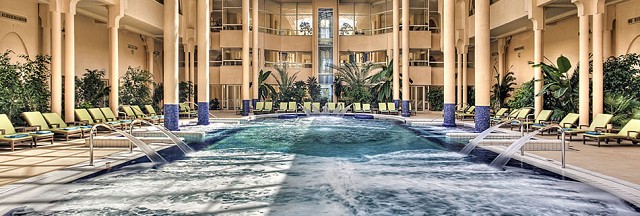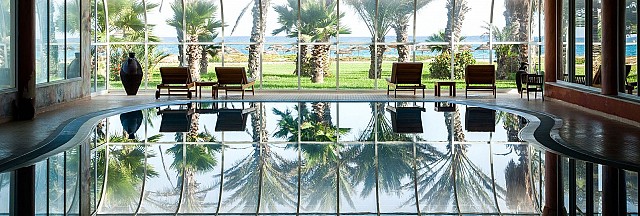Balneotherapy
History and development
Balneotherapy was very fashionable during the Renaissance.
In addition to therapeutic effects, balneotherapy brings recreation and relaxation to users.
How does it function? Adjustable jets are installed everywhere in the bathtub. These jets mix air with water and expulse them together under pressure.
Today's technology allows for profiting from the benefits of balneotherapy at home.
Benefits of balneotherapy
Balneotherapy is regarded as one of the most powerful natural therapeutic agents, while being an easy and practical application. It is beneficial to the whole body.
Balneotherapy regulates circulation: it stimulates blood circulation, relieves internal congestion, channels out toxins via sweat glands (Sweat is produced by these glands) and produces positive effects on the cardiovascular system.
In addition, cold water or hot water action has a stimulating effect on weak or sluggish blood circulation.
Balneotherapy also stimulates muscular tonus, nervous strength, digestion, nutrition, and eliminates dead cells and body toxins.
Calcium deposits in blood vessels and damaged capillary vessels are also eliminated.
Many physicians recommend Jacuzzi, or simply a hot bath, as an alternative means to treat back pain, tensions or muscle tissue inflammation, cervical or shoulder pain, arthritis, headache, sports injuries, various chronic diseases and stress.
Jacuzzis help remove various inflammations, colds and flu.
The inhalation of hot water steam during a Jacuzzi is highly recommended in case of sinusitis, bronchitis, asthma or allergy.
Hydromassage gives a sensation of lightness in the bathtub. It appeases the nervous system and relaxes muscles.
Jets generate a water movement, which tones up the body and reinvigorates aching muscles.
History
Thermal medicine has existed since Antiquity. Lepers then were put in baths and then left to dry in the sun to improve healing. The war injured went to baths to recover. There was a particular belief in the healing power of water. Today, we still respect the virtues of water and improve its use. Thermalism is the use of mineral water for therapeutic purposes.
This medical method is not a recent invention. It dates from 3,000 years BC. The Romans truly worshiped water. They built fountains, aqueduct systems and baths. Roman baths or Greek gymnasiums were huge hot baths for medical, sanitary and social usage in particular. These public baths were highly representative arenas where people could admire sculptures, paintings and statutes. They stood for luxury. The Greeks were the precursors of beauty canons in that era: everything had to be beautiful, big and strong. Therefore, baths were huge monuments, symbolising the city's wealth. They could cater for up to 1,000 individuals at a time. Roman baths had four sections: entrance, lukewarm water room, hot water room and cold water room. At that time, they knew how to practice blood vessel vasodilatation and vasoconstriction.
Thermalism witnessed an exceptional craze in the 19th Century. For reasons of easy access, spas were built near or inside major cities.










